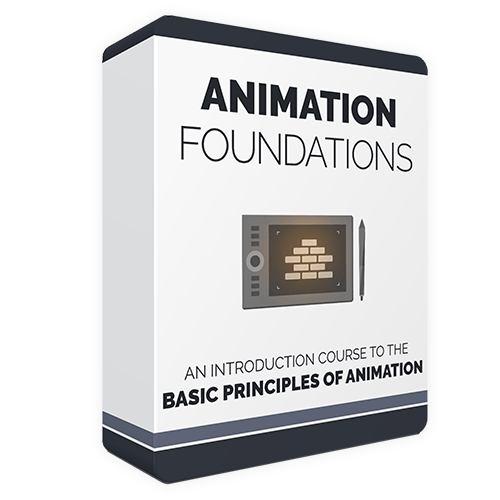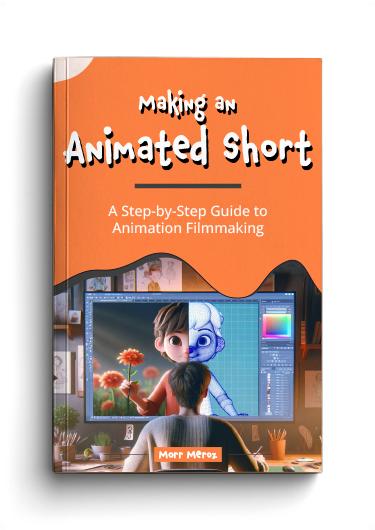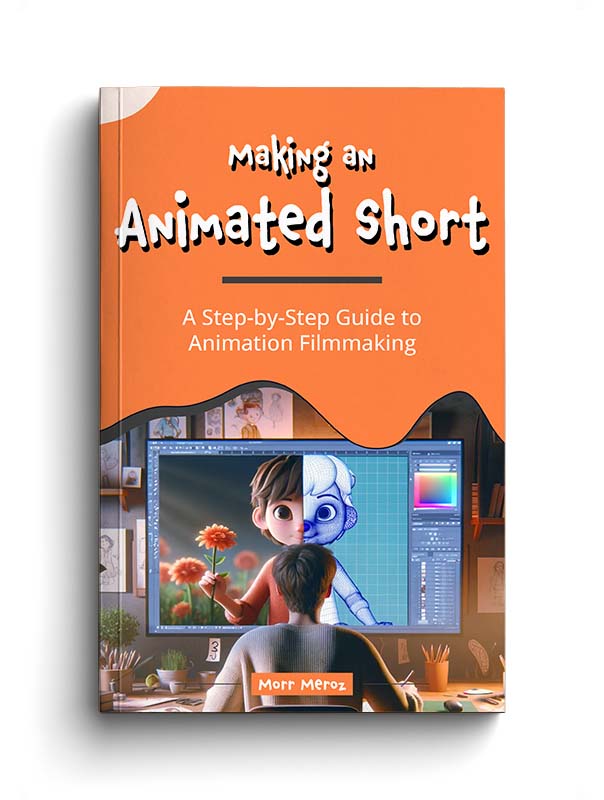自早期以来,动画世界已经走过了漫长的道路。今天的动画师可以使用先进的技术和软件工具,使这个过程比以前更容易和更有效(学习动画也比以前更容易)。然而,尽管有这些进步,仍然有一些核心概念继续成为任何动画教育的基础。这些概念被称为动画的12项原则。
Developed in the 1930s by animators at Walt Disney Studios, the 12 principles of animation were a gradual process of discovery and refinement. As animators tried to push their work to a new higher standard, they developed these principles as a way to ensure that their animations looked like they had weight and personality, and existed in the real world with real physics at work.
1981年,传奇动画师弗兰克-托马斯和奥利-约翰斯顿在《生命的幻觉》一书中首次将动画的12条原则汇编成我们今天所知的清单。这些原则是好动画和坏动画的区别。它们有助于创造生命的幻觉,而这正是动画的意义所在。
动画的12项原则如下:
- 壁球和拉伸
- 预备动作
- 构图布局
- Straight-ahead action and pose to pose
- Follow-through and overlapping action
- 慢进慢出
- 弧线运动
- 次要行动
- 时间节奏
- 夸张手法
- 实体绘图
- 吸引力
这些原则不仅限于二维动画,它们也适用于三维和任何其他类型的动画。这些原则都是相关的,并且相互促进。理解这些原则并知道如何应用它们,对于创造出有说服力的、可信的动画是至关重要的。
In this post, we’ll take a closer look at each of the 12 principles of animation in detail.
想了解更多吗?
学习角色动画的基本原则,包括对不同类型的动画的调查,基本词汇,以及动画的12个原则。如果你刚开始学习,想确保你的基础知识被覆盖--本课程是最好的开始。
1.壁球和拉伸
Squash and stretch describe how an object changes shape in response to forces acting on it. This principle is used to make animation more visually appealing and to help convey movement and impact.
挤压指的是一个物体被冲击或对立的力量所压缩,而拉伸则是指一个物体被某种东西拉扯或快速移动所膨胀。如果有效地使用,挤压和拉伸可以帮助创造动画中的重量感、节奏感和冲击感。
So how do squash and stretch work in animation? For example, when a bouncing ball hits the ground, it squashes on impact and stretches as it rebounds. This distortion emphasizes the path of the ball’s movement, almost like a motion blur.
挤压和拉伸也可以用来表达一个物体的材料。较软的材料,如橡胶,将扭曲更多,而刚性的材料,如金属,将扭曲更少。即使是没有生命的物体,如金属球,也可以从一点挤压和拉伸中受益,以传达冲击力。
在使用挤压和拉伸时,保持一个物体的体积是很重要的。否则,它将看起来像物体在增长和缩小,而不是变形。如果一个东西变短,它也应该变宽,如果它变长,它也应该变薄。
夸张的挤压和拉伸是定义经典喜剧动画片(如《汤姆和杰瑞》和《Looney Tunes》)外观的一个重要部分。但即使在更成熟的动画中,挤压和拉伸也可以用来帮助传达运动和影响。
In 3D animation, squash, and stretch tend to be more subtle. A character rig can be used to distort the model, but it can also be achieved by being smart about how we pose the character.
2.预测
预期是指在一个主要动作之前发生的小动作,并预示着主要动作即将发生。它是创造更多栩栩如生的人物,使行动更清晰,并为观众提供有吸引力和令人满意的观看体验的关键因素。
预测存在于我们的日常生活中,我们可以在各种活动中看到它,如体育、舞蹈,甚至在动画片中。想想棒球运动员的挥棒动作。尽管击球手已经举起了球棒,而且看起来他可以在投球时直接挥棒,但他在向前挥动重量之前抬起腿并向后倾斜。他首先将球棒稍稍向后伸,给他一个更长的挥棒路径。你可以通过看到他的期待来判断,一个强有力的挥棒即将到来。
Another common example of anticipation is crouching down before jumping. In cartoons, we often see an exaggerated anticipation before a character zips out of a scene. In general, the faster the movement, the stronger the anticipation should be. This helps the viewer’s eye keep up and makes it clear what happened.
预测也可以是一些微妙的东西,比如在转头之前让人物的眼睛移动。它使人物更加栩栩如生,因为它显示了意图,这使你的人物看起来像是在积极思考和选择。它还可以通过给观众明确的提示来帮助他们关注视觉上发生的事情,特别是当我们有非常快的动作时。
3.阶段性
分段是指以一种方式呈现一个镜头,使镜头的内容尽可能清晰,镜头的叙事功能尽可能强烈的原则。舞台的概念适用于所有形式的视觉艺术,包括电影制作、平面设计和动画。
Staging should be considered from initial preproduction and storyboarding, all the way through to the final animation. When designing an environment, clear visual cues should be included to help the audience understand the nature of the environment. For instance, if the scene is set in an abandoned warehouse, including graffiti and rubble will make it clear that it’s abandoned. The primary goal with composition is to make sure the audience’s eye goes exactly where we want and understands what we want them to understand.
在构思一个镜头时,应仔细考虑摄像机的角度和距离。每种镜头类型都有特定的功能,使观众对故事有不同的感知。
Blocking is another essential concept in animation that involves the positioning and movement of characters and subjects within the environment of the scene. In 3D animation, this is done within the virtual space. Positioning the camera and characters to ensure that the camera sees what you want at any given time can help convey the information effectively.
计时是另一个动画原则,涉及到确保正确的事情在正确的时间发生,特别是当有一个移动的摄像机时。一般来说,你只想让一件重要的事情在任何时候发生,而场景中的其他元素不应该被分散注意力。
最后,当涉及到角色动画时,要确保每个姿势都尽可能地清晰。剪影法则是确保清晰的有效工具,这意味着角色和他们正在做的任何事情都应该仅仅从他们的剪影中清晰可见。
4.直线与姿势之间的关系
There are two main approaches to creating movement in animation: straight ahead and pose-to-pose. Straight-ahead animation is an approach where each frame is created in sequence from beginning to end. This method can produce a spontaneous and lively animation that sometimes creates unexpected magic that couldn’t be planned. However, it can be challenging to maintain consistent sizes and timing, which can cause the motion to drift off track.
另一方面,"姿势对姿势 "动画包括首先创建每个动作的关键姿势,然后填充中间的姿势。这种方法将更多的注意力放在关键姿势的正确性上,从而使时间更准确,错误更少。然而,这些动作可能会让人感觉有点一般,而且无法提供即兴动作所能带来的惊喜魔力。
让我们考虑一下弹跳球的例子来更好地理解这两种方法。在Straight Ahead动画中,动画师会从创建第一帧开始,然后一帧一帧地移动,在每一帧中仔细绘制球的位置和大小,尽量保持大小一致,并确保运动遵循真实的路径。
另一方面,姿势对姿势的动画包括先创建关键姿势,然后再填充中间的姿势。在弹跳球的动画中,我们会先为每次弹跳和落地创建关键姿势。这些姿势将是我们其余的动画的指导,然后我们将填补缺失的帧以使运动更流畅。
One advantage of pose-to-pose animation is that it allows the lead animator to create the keys and breakdowns and then hand off the scene to an assistant to do the in-betweens. When working with computer-tweened animation, we can use the easing graph to change the slow-in and slow-out of the object as it moves between the two keyframes. This technique can result in a more polished and professional-looking animation.
5.跟踪和重叠行动
Follow-through and Overlapping Action are two important principles that help bring characters and objects to life by replicating the laws of physics in motion. The concept of Follow-through refers to how different parts of a body move at different speeds and come to rest at different times. This principle includes the concept of Drag, which is when one part of a body lags behind another when a motion starts.
The Overlapping Action principle is related to Follow-through and refers to how different parts of the body are moving based on different timing. This means that not all parts of a body start and stop moving at the same time. In some cases, this can be used to create a sense of surprise or urgency in an action.
One way to incorporate these principles into an animation is to add Follow-through and Overlapping Action to certain body parts, such as the hair of a character in a jumping animation. By adding subtle drag to the hair as the character turns or ducks down, and then adding more exaggerated drag as they jump, the animation becomes more dynamic and realistic.
6.慢进慢出
Slow in and slow out, also known as ease-in and ease-out, is a fundamental principle of animation that can greatly improve the realism and organic feel of a motion. The principle involves gradually accelerating an object as it moves from one position to another and then gradually decelerating it as it approaches the endpoint. In hand-drawn animation, this is achieved through spacing, which refers to the amount of change between successive frames. By gradually increasing the spacing throughout the frames and then decreasing it again, the illusion of acceleration and deceleration is created.
在数字动画中,无论是二维还是三维,缓和都是由缓和图或样条曲线控制的。图上的点代表关键帧或姿势,连接它们的线代表这些关键帧之间的变化速度。然后计算机自动生成与这些速度变化相匹配的间隔帧。调整图形可以使运动更敏捷或更平滑,这取决于所需的效果。
使用慢进慢出也有助于强调关键姿势,并让它们承载整个场景。通过在这些姿势中和周围花更多的时间,在它们之间花更少的时间过渡,场景可以感觉更有冲击力和意义。掌握慢进慢出对于有效应用动画的许多其他原则至关重要。
7.弧线
In the world of animation, arcs are one of the most important principles to understand. This principle stems from the observation that living things do not move in straight lines, but rather in curved motions. For new animators, missing these kinds of arcs can be a common mistake.
为了说明这一原理,让我们考虑一下钟摆。当一个钟摆从一个位置摆动到另一个位置时,它不是在一条直线上运动,而是在一个弯曲的运动中,可以描画出一个弧线。
在广泛的日常活动和动作中都可以找到弧线。当动画师研究运动时,他们需要注意这类图案,因为它们赋予角色的运动以生命。动画师还可以在动画中有意增加或夸大弧线,使其更加生动有趣。
例如,在制作转头的动画时,第一眼看去可能很好。然而,通过在转身时增加一点倾斜,形成一个弧度,这个动作开始看起来更人性化。
8.次要行动
次要行动指的是支持人物主要行动的较小动作或姿态。次要动作从属于主要动作,不会分散其注意力。它通过强调动作背后的态度或动机,使镜头的重点更加清晰。
例如,如果我们有一个疲惫的人在慢跑的动画,我们可以添加喘气和擦眉的动作,作为强调角色疲惫的辅助动作。这些添加的动作增强了动作的效果,而不是分散了动作的注意力。
It’s easy to confuse secondary action with overlapping action, which is driven by the same force as the primary action but moves with different timing. Secondary action, however, enhances the idea of the primary action but isn’t directly caused by it.
9.时间安排
在动画的12个原则中,计时是最重要的原则之一。它指的是通过使用的帧数来确定动作的速度。动画是一种光学幻觉,它依靠图像的数量和显示的速度来创造运动。计时不应该与间隔混淆,后者指的是帧之间的变化量。
计时是使一个动作看起来清晰、准确和逼真的重要部分,但它也影响到一个动作背后的个性。为了创造不同的情绪,动画师可以加快或减慢一个动作的速度,他们还可以在一个动作中玩弄时机。
当使用数字二维或三维角色装备时,动画师主要考虑的是实际时间,因为大部分帧是由计算机生成的。然而,在做手绘动画时,动画师需要考虑到所需的绘图数量。幸运的是,手绘动画通常是按两张图完成的,这意味着每张新的图画都要保持两帧。这种技术允许动画师只用12张图而不是24张图来制作一秒钟的动画。
10.夸大其词
夸张是指以一种高度的或极端的方式来表现一个主题,而不是真实的。动画的最大优势之一是你可以夸张而不被物理限制所束缚。夸张可以使你的动画更加清晰,使一个动作背后的意图明确无误。它可以通过增加一个动作背后的力量和情感的内涵,使一个动作更有冲击力,它可以通过使你的动画更有趣来增加吸引力。
夸张是使姿势和构图易于理解的一个好方法。例如,我们可以夸大一个姿势,使轮廓更清晰,或者夸大一个表情,使情感更清晰。我们可以夸大设计、动作或整个构图,使情况更加清晰。
夸张也很适合激烈的动作。我们不仅要让观众看到它,还要让他们感受到它。夸张的姿势和增加动作的力度和冲击力可以使场景更有冲击力。即使是一个简单的相机抖动也能使场景更加紧张。
11.实体绘图
实体画是指以创造体积、重量和平衡感的方式来绘制和摆放角色。这适用于手绘和三维动画,尽管方法不同。
在手绘动画中,绘画技巧对于实现体积、重量和平衡至关重要。艺术家需要能够从任何姿势或角度来画一个角色,并牢记三维空间。
在三维动画中,体积不是问题,因为有一个三维物体,但重量和平衡仍然是一个挑战。重量和平衡取决于角色的摆放方式。对称的姿势,也被称为双胞胎,应该避免,因为它看起来不自然。人们在静止不动的时候会不均匀地转移他们的体重,当人物调整他们的身体以保持质心在他们的脚上时,平衡就开始发挥作用。展示人物如何在移动身体质量时保持平衡,是正确掌握体重的一个重要部分。
12.上诉
吸引力是动画的原则,它与角色设计的特质有关,这些特质使他们在本质上引人入胜。它从良好的角色设计开始,必须贯穿到角色的动画制作中。
吸引力可能来自于一个角色的可爱、优雅、怪异、简单,或任何其他突出的品质。尽管吸引力在某种程度上是主观的,但有一些一般规则可以遵循,这将有助于使设计更有吸引力。一个好的开始是思考主要人物是如何一起工作的,改变人物结构中使用的基本形状将使他们保持有趣和与众不同。
每个人物都应该有一些属性或形状或比例,使他们可以作为一个剪影来识别。这可以通过漫画的夸张来实现。强调赋予他们你所追求的品质的任何东西,而不强调那些不那么重要的东西。记住要保持简单,因为细节会吸引人的眼球,需要耗费脑力来处理,特别是当事物处于运动状态时。
一旦我们有了一个具有理想品质的设计,我们需要确保他们也能以一种进一步增强其设计的方式移动。可爱的人物应该可爱地移动。强壮的人物应该表现出力量。优雅的人物应该优雅地移动,等等。当然,有目的地将一个角色的设计和他们的运动风格进行对比,也是很有吸引力的。
归根结底,吸引力是一种主观的品质,关系到一个动画角色的整体成功。通过牢记良好的设计、清晰和简单的基本原则,动画师可以创造出视觉上有趣和引人注目的运动角色。
如果你想了解更多关于动画的12个原则,请查看我们的动画基础课程。
Making an Animated Short (FREE ebook)
A free ebook covering the process of making an animated short film from start to finish.





